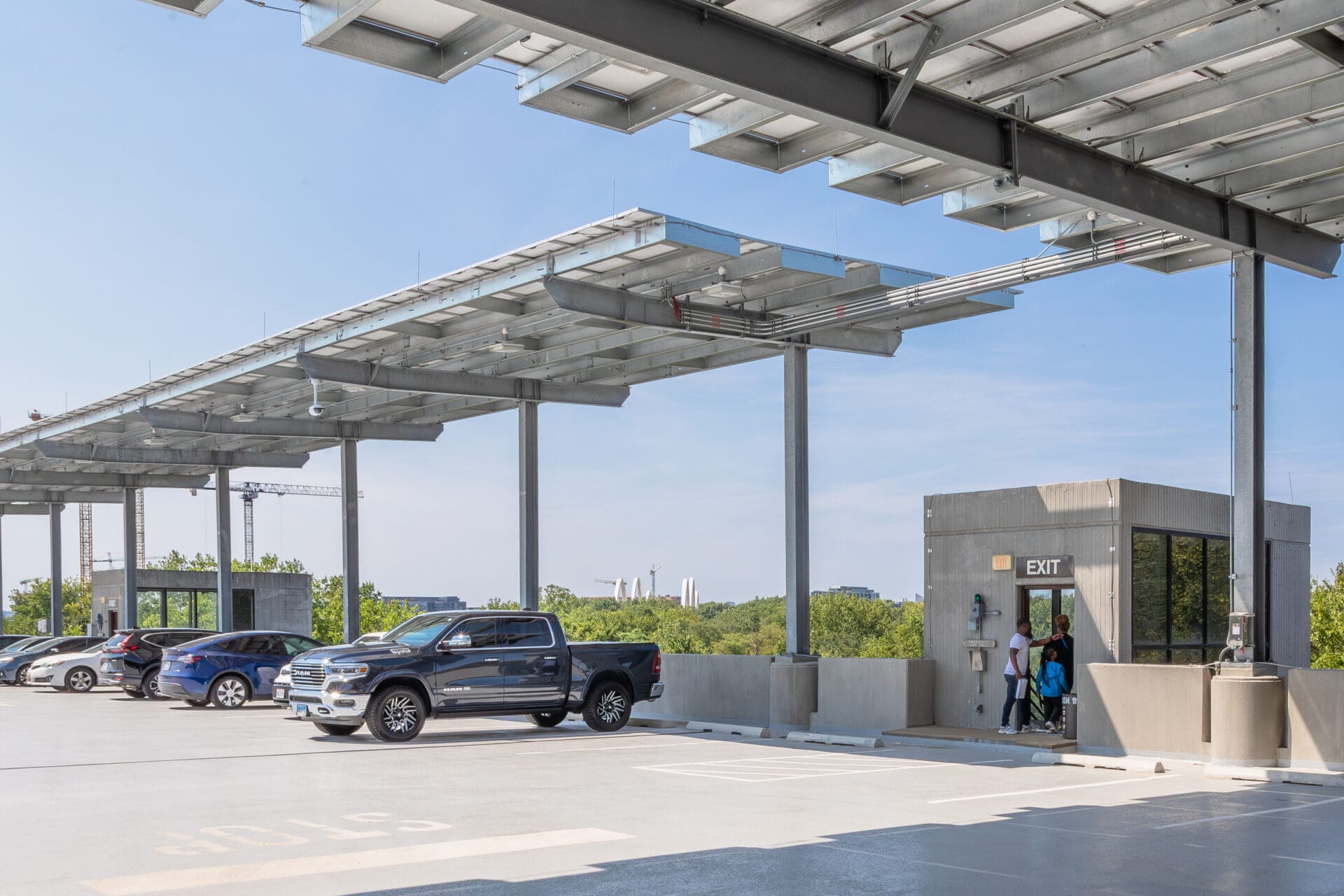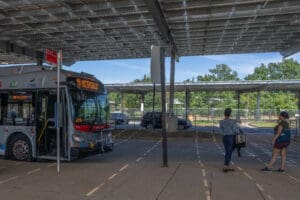
Key Metrics
· 10 MW of energy from solar photovoltaic (PV) carports across four WMATA sites
· 11 acres of PV panels installed on covered parking and bus bays
· Will generate up to 13.5 million kWh of renewable energy each year, equivalent to powering 1,100 homes annually
· 4,000 metric tons of CO₂ emissions avoided each year—equivalent to removing 900 gas-powered vehicles from the road
About the WMATA Solar Carport Project
The Washington Metropolitan Area Transit Authority (WMATA) Solar Carport Project is a 10-megawatt renewable energy initiative spanning four Metrorail stations: Anacostia, Southern Avenue, Naylor Road, and Cheverly. Energized between 2023 and 2024, the project transforms parking areas into clean energy assets while enhancing the customer experience.
Initiated in 2019, the project was designed to leverage the District of Columbia’s strong Solar Renewable Energy Credit (SREC) market to generate long-term lease revenue, modernize parking infrastructure, and support regional clean energy goals.
The project was delivered through a single, innovative 25-year lease agreement.
TotalEnergies (formerly SunPower) led the design and construction of the solar carports, while subsidiaries of MN8 Energy LLC (formerly Goldman Sachs Renewable Power LLC) own, operate, and maintain the systems. The solar arrays are connected to the Potomac Electric Power Company (PEPCO) grid, and the electricity generated is available to residents and businesses in D.C. and Maryland through a community solar program.
In addition to generating clean energy, the project delivers tangible improvements for WMATA customers:
· Covered parking and bus bays offering weather protection
· Re-paved parking lots and upgraded lighting
· Enhanced safety through new security cameras and emergency call boxes
These upgrades were implemented during construction to minimize disruption to customers and maximize long-term value.

As one of the largest community solar projects in the Mid-Atlantic, the Metro Solar Carport Project demonstrates how public infrastructure can be leveraged to:
- Generate new, recurring revenue through long-term leases
- Modernize customer-facing facilities
- Deliver regional clean energy
- Advance Metro’s 2025 Energy Action Plan and D.C.’s goal of 100% renewable energy by 2032
By transforming existing transit real estate into productive energy assets, Metro has shown how clean energy development can succeed even in space-constrained, densely populated areas—delivering measurable financial, environmental, and community benefits.